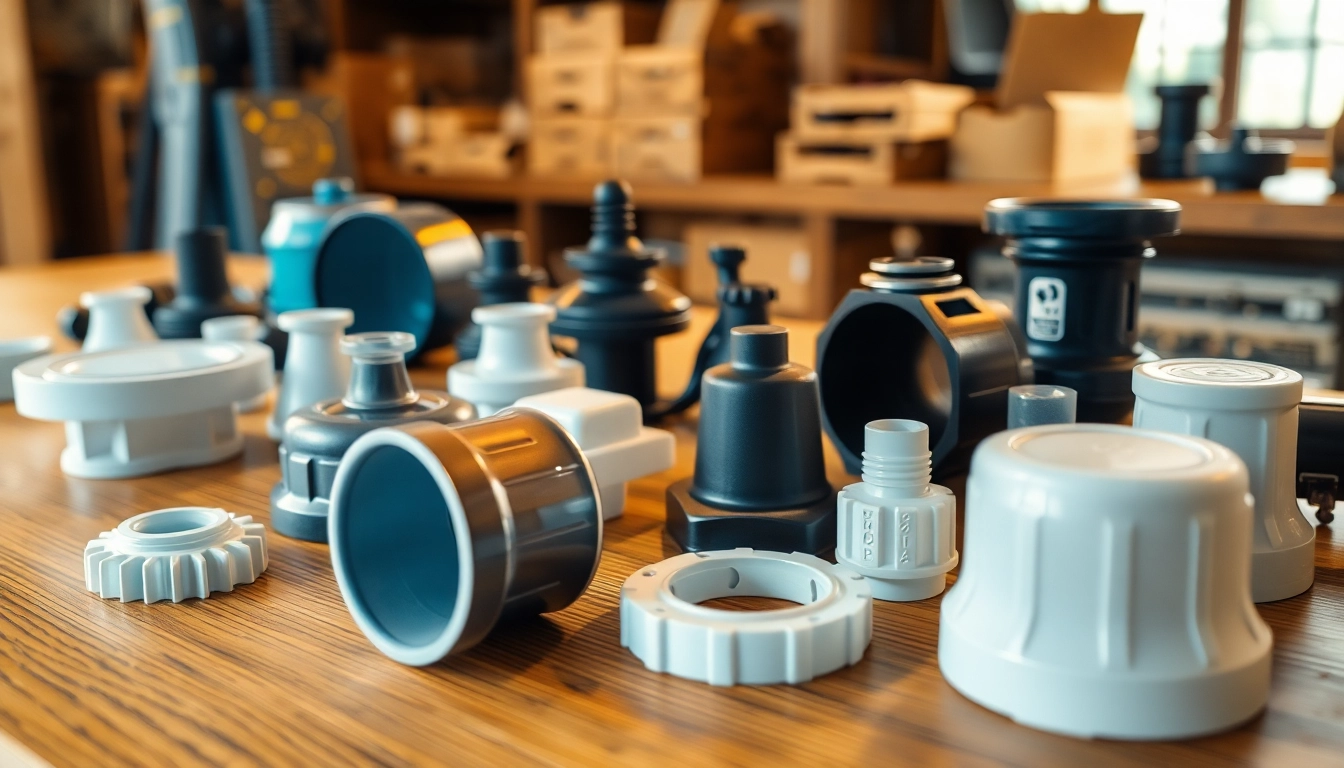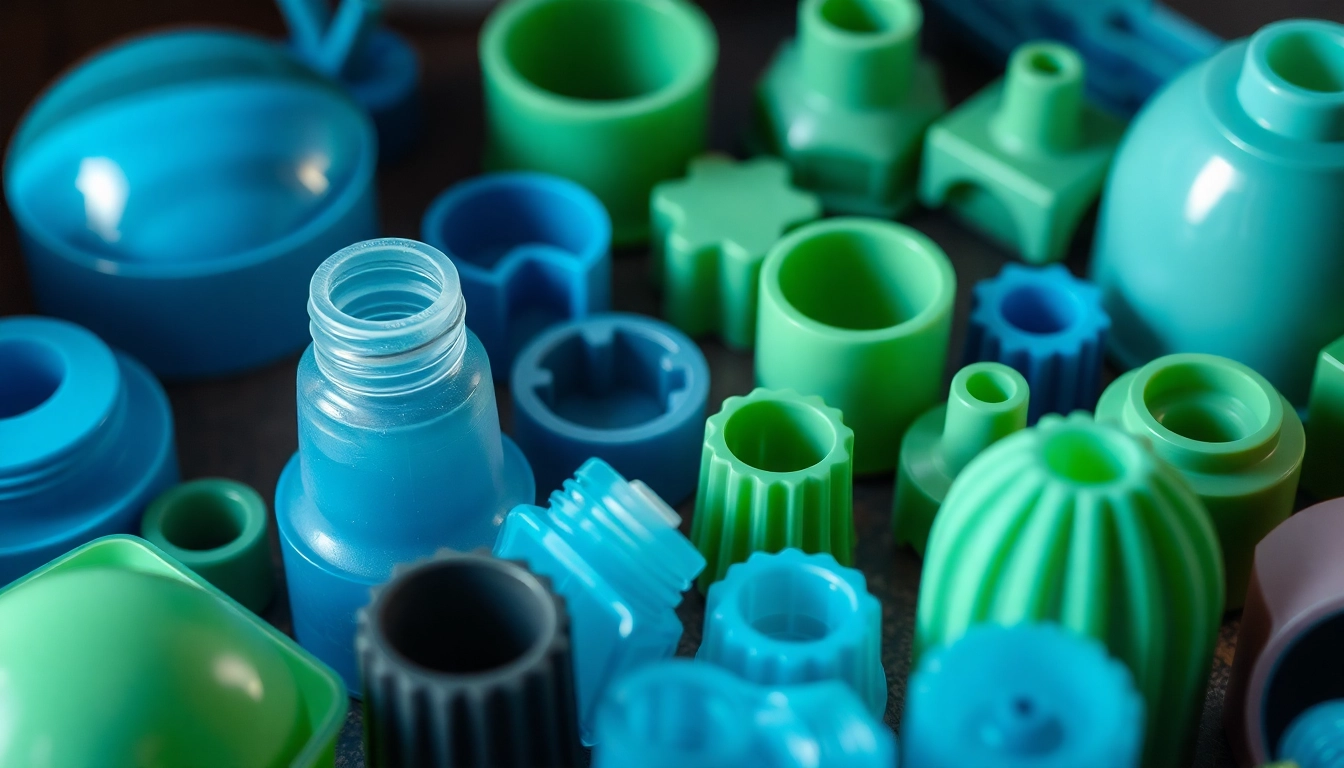Introduction to Blow Moulded Plastic Parts
Blow moulded plastic parts constitute an integral aspect of modern manufacturing, providing versatile solutions across a multitude of industries. They stand out for their efficiency in creating hollow components, which are essential for both commercial and industrial applications. This article delves deep into the world of blow moulded plastic parts, exploring the intricacies of the blow moulding process, the various techniques employed, and the myriad benefits they offer to businesses.
What Are Blow Moulded Plastic Parts?
Blow moulded plastic parts are hollow plastic components created using a specific manufacturing process known as blow moulding. This process involves inflating a heated plastic tube (known as a parison) within a mould to shape and cool it, ultimately resulting in a wide variety of products. The advantage of this technique lies in its ability to produce lightweight and durable parts, which are ideal for packaging, automotive, and consumer goods applications.
The Blow Moulding Process Explained
The blow moulding process can be broken down into several key steps:
- Heating: The plastic is heated until it reaches a molten state, making it malleable and ready to be formed.
- Inflation: The heated plastic is shaped into a tubular form known as a parison, which is then placed into a mould. Compressed air is introduced to inflate the parison, expanding it against the inner walls of the mould.
- Cooling: Once the plastic has taken the shape of the mould, it is cooled down, solidifying its form.
- Ejection: After solidification, the mould is opened, and the newly formed blow moulded part is ejected and further processed as needed.
Common Applications of Blow Moulded Parts
Blow moulded plastic parts find application across various sectors, including:
- Packaging: Commonly used for bottles, containers, and packaging materials.
- Automotive: Utilized in manufacturing parts like fuel tanks and air intake ducts.
- Consumer Goods: Found in household items, toys, and appliances.
- Industrial: Used for items such as bins and bulk containers.
Types of Blow Moulding Techniques
Extrusion Blow Moulding Overview
Extrusion blow moulding is one of the most common methods for producing blow moulded parts. It involves extruding a continuous profile of heated plastic, which is then cut to length and formed into a parison. The parison is inflated in a mould to form a hollow part. This technique is known for its efficiency and cost-effectiveness, making it ideal for high-volume production.
Injection Blow Moulding Explained
Injection blow moulding combines the advantages of injection moulding and blow moulding. In this method, a preformed plastic parison is injected into a mould, and once it cools slightly, it is inflated in a second mould. This technique allows for greater precision and versatility in creating uniquely shaped parts, often used in applications requiring higher wall thickness and intricate designs.
Comparison of Different Blow Moulding Methods
Each blow moulding technique has its unique advantages and ideal applications:
| Method | Advantages | Best Use Cases |
|---|---|---|
| Extrusion Blow Moulding | High-volume production, low cost, versatile | Bottles, containers |
| Injection Blow Moulding | Higher precision, intricate designs | Complex shapes, thicker walls |
| Injection Stretch Blow Moulding | Excellent strength and transparency | Single-serve bottles, cosmetic containers |
Materials Used for Blow Moulded Plastic Parts
Popular Plastics in Blow Moulding
The materials commonly used for blow moulding include various types of plastics, each offering distinct properties suited for different applications. These include:
- Polyethylene (PE): Known for its flexibility and impact resistance, it is widely used in packaging.
- Polypropylene (PP): Offers excellent thermal resistance, often used in automotive applications.
- Polyethylene Terephthalate (PET): Recognized for its barrier properties, making it ideal for beverage bottles.
- Polyvinyl Chloride (PVC): Used for its rigidity and durability, suitable for construction applications.
Impact of Material Choices on Design
The choice of material significantly impacts the design and functionality of blow moulded parts. For example, selecting a lightweight material can enhance transportation efficiency but may require reinforcement in high-stress applications. Understanding the properties of different plastics enables designers to optimize product performance while meeting necessary regulatory requirements.
Environmental Considerations in Material Selection
Environmental considerations are becoming increasingly important in material selection for blow moulding. Advances in sustainable materials, such as biodegradable plastics, are emerging as viable alternatives. Furthermore, recycling and reusing materials not only address ecological concerns but also contribute to cost savings in production.
Benefits of Using Blow Moulded Parts
Cost Efficiency and Production Speed
Blow moulding is celebrated for its cost efficiency and fast production speeds. Compared to traditional manufacturing methods, blow moulding typically results in lower production costs due to less waste of raw materials and shorter cycle times. High-volume production capabilities enable manufacturers to meet rising demands without compromising quality.
Design Flexibility and Customization Options
The blow moulding process offers exceptional design flexibility, allowing for customization in sizes, shapes, and features. Manufacturers can easily develop bespoke components tailored to specific applications, enhancing product offerings and improving market competitiveness.
Durability and Performance of Blow Moulded Products
Blow moulded products are known for their durability, robustness, and ability to withstand environmental conditions. The hollow design allows for products to be lightweight without sacrificing strength, making them suitable for a variety of demanding applications, including those in the automotive and industrial sectors.
Future Trends in Blow Moulding Technology
Advancements in Blow Moulding Equipment
The evolution of blow moulding equipment is paving the way for increased automation and production efficiency. Advanced technologies, such as robotics and AI, are already streamlining production processes, reducing human error, and enhancing precision in manufacturing.
Sustainability Efforts in Plastic Moulding
As global awareness of environmental issues rises, the blow moulding industry is responding with sustainability efforts. Strategies like using recycled materials, developing eco-friendly packaging solutions, and transitioning to sustainable energy sources are reshaping production processes and materials used in blow moulding.
The Impact of Industry 4.0 on Blow Moulding
Industry 4.0, characterized by the integration of smart technology and data analytics into manufacturing, is set to revolutionize blow moulding. IoT devices collect and analyze performance data, leading to insights for optimizing production efficiency, minimizing waste, and enhancing product quality.
Conclusion
The blow moulding industry continues to evolve, driven by technological advancements and a growing emphasis on sustainability. By understanding the intricacies of blow moulded plastic parts, companies can harness the full potential of this manufacturing technique to enhance their product offerings and meet the demands of the modern market.

